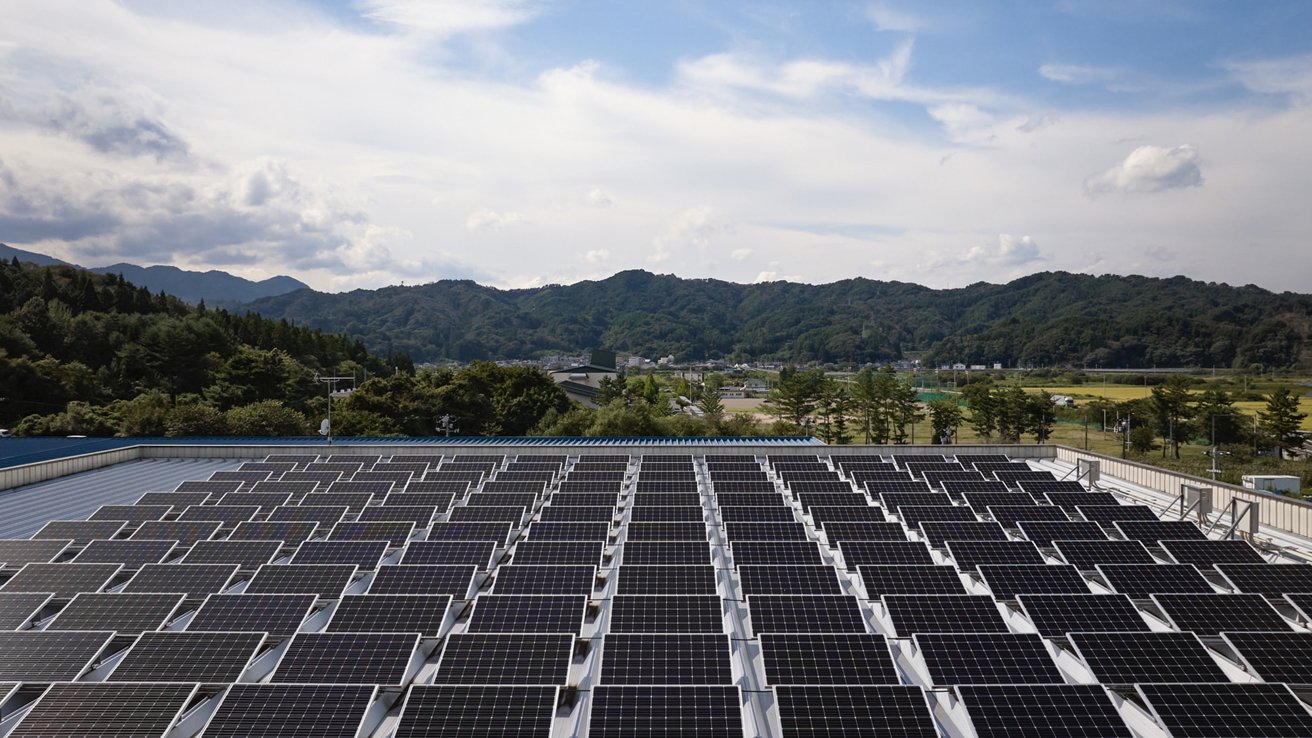Apple cuts more than 60% of its global greenhouse gas emissions
Apple continues to make progress on its previously announced Apple 2030 goal, hoping to become carbon neutral over the next five years.

Image Credit: Apple
Just in time for Earth Day, Apple has announced that its global greenhouse gas emissions are down 60% compared to 2015 levels. The ultimate goal, announced by Apple in 2020, is ambitious, to say the least.
The project is called "Apple 2030" and centers around the goal of becoming 100% carbon neutral by 2030. While Apple has already been carbon neutral on the global corporate level, the company wants to become carbon neutral across its entire business, manufacturing supply chain, and product life cycle.
"We're incredibly proud of the progress we're making toward Apple 2030, which touches every part of our business," Lisa Jackson, Apple's vice president of Environment, Policy, and Social Initiatives said.
"Today, we're using more clean energy and recycled materials to make our products than ever before, we're preserving water and preventing waste around the world, and we're investing big in nature. As we get closer to 2030, the work gets even harder -- and we're meeting the challenge with innovation, collaboration, and urgency."
More specifically, Apple 2030 lays out plans to reduce emissions by 75 percent by 2030 while developing carbon removal solutions for the remaining 25 percent of its footprint. According to Apple, in 2024, the company managed to avoid an estimated 41 million metric tons of greenhouse gas emissions.
Reductions were made through various measures, including cleaning up the electricity supply that helps power its supply chain. There are now 17.8 gigawatts of renewable electricity online in Apple's global supply chain, which is 17% higher than the previous year.
Apple is working with its suppliers to clean up production carbon, too. When semiconductors and flat-panel displays are manufactured, they emit highly potent fluorinated greenhouse gases (F-GHGs).
Apple says that 26 of its semiconductor suppliers are committing to abate 90% of these emissions. Because these factories often create materials for other companies, this effort reduces carbon impact beyond Apple, as well.
All of the company's direct display suppliers have made the same commitment. In 2024, display and semiconductor suppliers reduced greenhouse gas emissions by 8.4 million metric tons.
Additional strides are being made in waste reduction. Apple suppliers have redirected 600,000 metric tons of waste from landfills in 2024.
Apple and its suppliers have saved 14 billion gallons of fresh water in 2024, bringing the total to 90 billion since launching the Supplier Clean Water Program in 2013. The company currently plans to replenish 100% of freshwater withdrawals in high-stress locations in the next five years.

Image Credit: Apple
And, of course, Apple continues to cut its reliance on virgin rare earth elements used to power batteries and features like the Taptic Engine. The company has recently surpassed 99 percent of its 2025 goals to use 100 percent recycled rare earth elements in all magnets and 100 percent recycled cobalt in all Apple-designed batteries.
In 2025, Apple introduced the new MacBook Air, which is comprised of 55% recycled content -- the most of any Apple product. In 2024, Apple introduced its first carbon-neutral addition to its Mac lineup: the new Mac mini. Customers can also choose a carbon-neutral option Apple Watch in any material.
Ahead of Earth Day 2025, Apple also encourages customers to recycle their old and unwanted devices over the next month with a new promotion.
From now through May 16, Apple is offering 10% off eligible accessories when you bring an old device to recycle at a participating Apple Store. Customers can recycle a range of old devices, including Apple gear like AirPods, Apple TVs, and HomePods, or even third-party gear like printers, mice, and keyboards.
Read on AppleInsider

Comments
Hope to see their carbon removal or carbon credit fund invest in direct air capture (accelerated weathering) and more carbon avoidance. Just award or subsidize solar+storage+EV to people with carbon credits. Like in Southeast Asia, an EV moped, home battery and solar would be great! It would be great here in the USA, albeit 3x more costly than it should be.